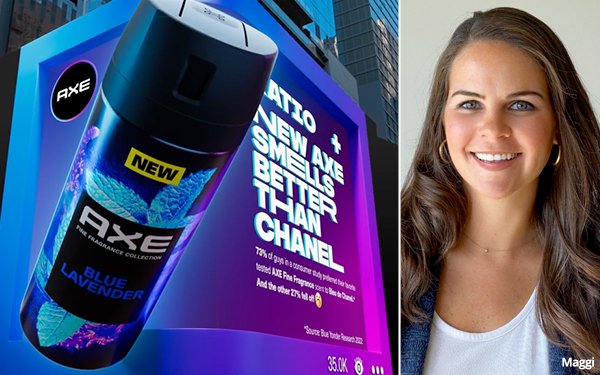Are 3D Anamorphic Billboards The Future? Q&A With BCN Visuals' Lina Maggi
- by Colin Kirkland , December 28, 2023

In a world where people pay to avoid ads, it’s somewhat incredible that 3D anamorphic billboards -- captivating out-of-home optical illusions that make visuals appear to jump out of a flat surface -- are not only attractive to the public, but are worthy of taking a phone out and posting to social media.
According to a new study conducted by digital advertising agency and visual effects studio BCN Visuals, more than half of viewers are likely to film a 3D anamorphic ad and share it with friends via a social media app or in person. Almost 70% of respondents reported that the ad type makes the brand seem more “premium” and “more influential” in changing their perceptions of the brand, while 66% said they are more likely to buy the product being presented compared to a product on a 2D ad.
BCN Visuals has been creating cinematic visual displays for a wide range of major brands, like PlayStation, Disney, Coca-Cola, UPS, Netflix and a host of emerging movies and video games, most notably on billboards in Times Square and the MSG Sphere in Las Vegas.
“We’re the shiny new toy everyone is excited about,” BCN’s head of partnerships and out-of-home advertising Lina Maggi told MediaPost.
In this Q&A, MediaPost sat down with Maggi to learn more about what goes into these 3D anamorphic campaigns, how they help brands spend their advertising budgets more efficiently, why consumers may need optical illusions, and more.
This interview has been edited for concision.
MediaPost: What does it mean for an ad to be '3D anamorphic'?
Lina Maggi: Like a standard movie, most advertising these days is 3D. But 3D anamorphic is like 3D on crack. It's a forced perspective, and it's an optical illusion. So you're developing something for a screen that appears to have depth.
MP: Can you give us an example of a recent project?
LM: Our Xbox ad on The Sphere in Las Vegas is the hot one right now. We have four different IPs from Xbox, and it looks like there is an artificial frame with a main element popping out, even though nothing is actually popping out. We're using shadows and angles and perception and a whole lot of math to create this optical illusion.
MP: Why go to these lengths to develop an ad?
LM: In this day and age, the attention span is dwindling by the second, and people are paying to skip ads. But people get excited when they see a billboard, and now you have this added layer of something that's super cool. They are compelled.
In one of our recent campaign studies, we found that 55% of people are likely or very likely to film a 3D anamorphic billboard and share it with their friends. So in a world where people are paying to ignore ads, this type of stuff is super powerful.
MP: How many billboards across the globe are capable of 3D anamorphic campaigns?
LM: We can do 3D anamorphic on any full-motion board globally. There is no limitation as to where and what location -- what city -- we can execute on. We create a master file and then customize adaptations for each additional billboard. The team will then be focused on a specific board for six to eight weeks.
MP: How have you seen brands using these billboards to drive sales in creative ways?
LM: In a campaign we did for BMW last October, the company used the billboard in Times Square to announce a new XM electric vehicle, which usually happens at a major auto show. BMW started posting about something exciting happening in Times Square, which brought people out to see the launch in person.
Not only were people filming the campaign on their phones, but they scanned a QR code we included for pre-orders. In the end, BMW amassed 20 million views on TikTok and sold out the $160,000 car.
MP: Are these 3D anamorphic billboard campaigns a sustainable option for big brands in terms of ad spend?
LM: Usually our clients want to go all out -- they want the biggest, most expensive boards on the market, which does rule out a lot of companies with smaller budgets. We typically work with some of the larger brands that have a national or global presence. But if you're going back to media math basics to calculate your impressions and the investment that you've put in, your CPM is actually quite low. Especially if you have people converting and buying and pre-ordering as a result of each billboard.
MP: What should brands avoid when pursuing optical illusions in out-of-home campaigns?
LM: Did you see the Maybelline campaign where they put eyelashes on the subways in the UK? People loved it. There was this initial hype, until people realized it was fake. And they got kind of pissed off at the brand, because they felt tricked.
I think there are a lot of brands trying to bypass the investment to actually do something really cool and it ends up hurting them on the back end.
With 3D anamorphic billboards, people can go out and see it live.


